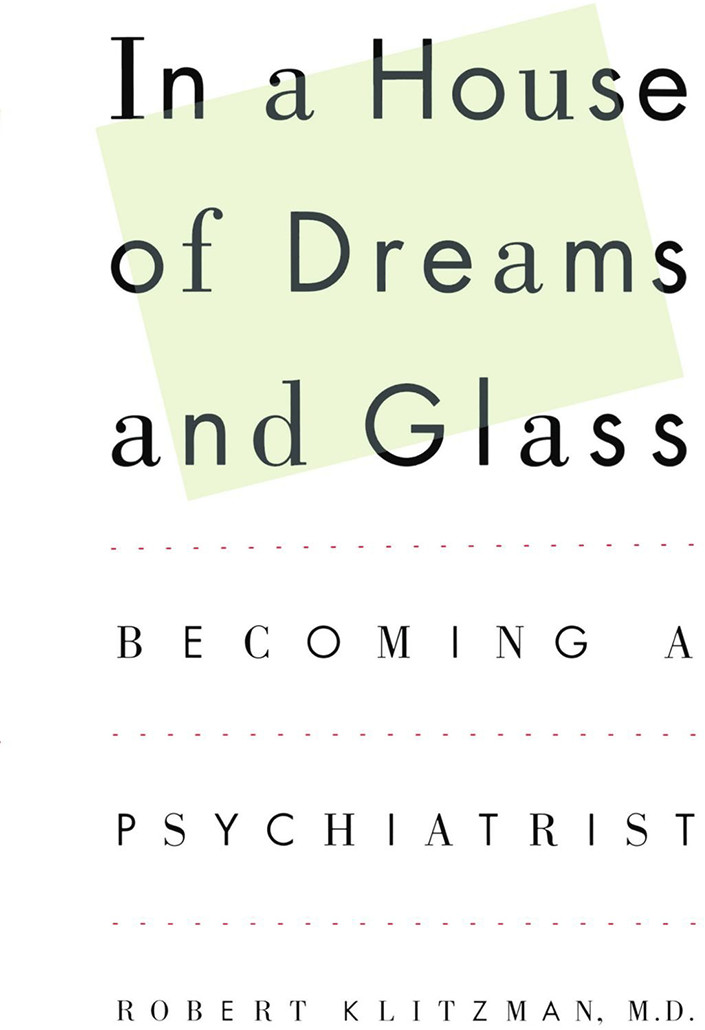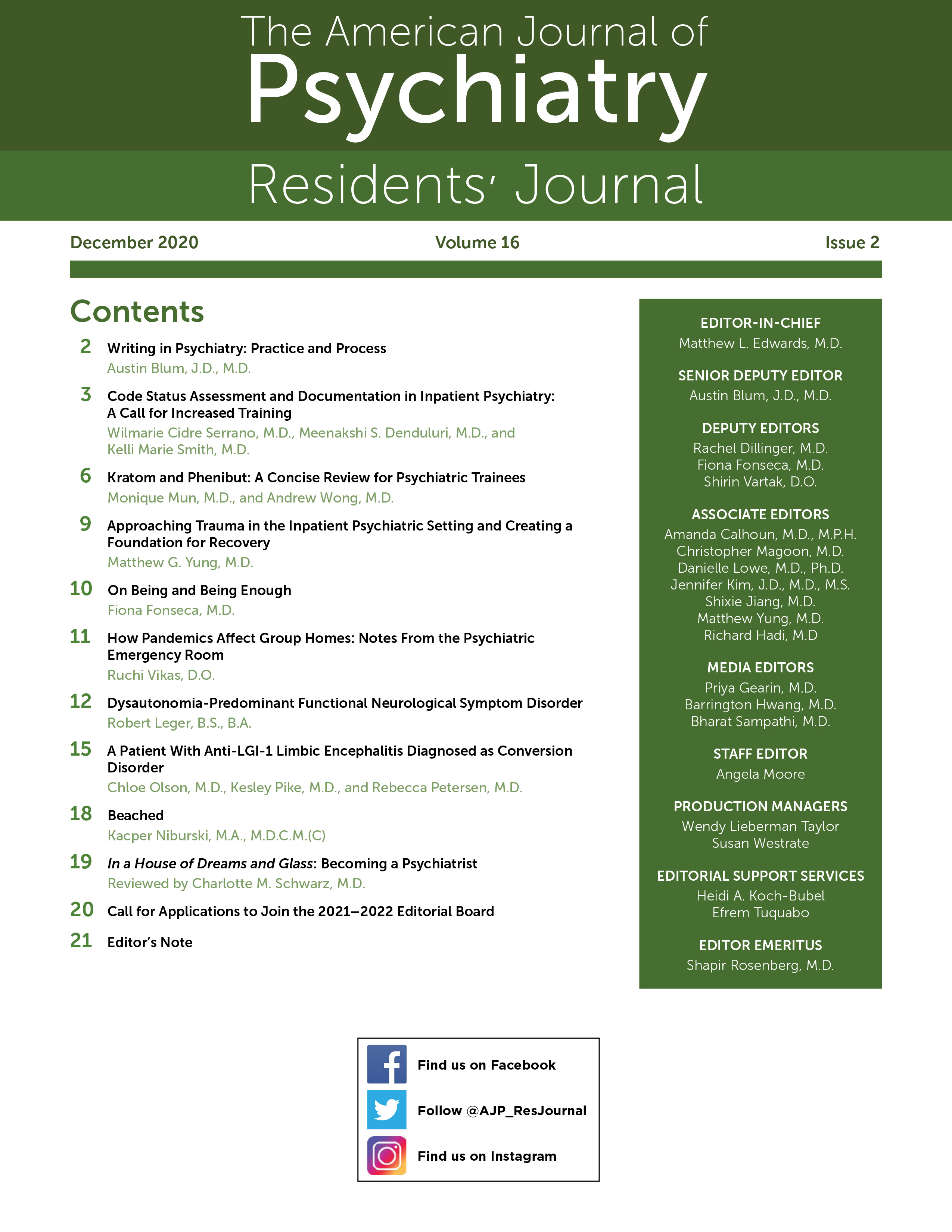Robert Klitzman’s 1995 memoir In a House of Dreams and Glass opens with a scene all too familiar for psychiatry residents: Klitzman, then three days into his training on an overnight shift, gets paged to evaluate a 17-year-old named Jimmy who is refusing his medications and displaying escalating agitation. As Klitzman manages an emergency on the floor for the first time in his career, he experiences a relatable series of reactions. First, there is hopeful bargaining with Jimmy to take his medication, then fear of loss of control, then confusion over the burden of his authority. Finally, there is resignation as Jimmy is brought to the seclusion room. Klitzman grapples with the decision, as he plainly puts it, to "[inject] him with drugs against his will" and forcibly restrain him.
Twenty-five years after its publication, Klitzman’s account holds up remarkably well as a testament to the experience of psychiatry residency. If it is escapism one seeks from reading, stay clear of this book. However, if it is connectedness, a reminder of common experience in an era when isolation prevails, then In a House of Dreams and Glass delivers in abundance. It is a time capsule of the author’s training and inauguration into a career in psychiatry, and most of the situations he describes remain recognizable in today’s academic settings.
Prior to medical school, Klitzman conducted research in Papua New Guinea, living in a tribal community affected by kuru. That anthropological approach comes through in this narrative: throughout, the author describes day-to-day human interactions he witnesses in the context of their clinical environment. He notices the ways in which patients and hospital staff interact with each other and among themselves, including the dynamics of resident process groups and inpatient community meetings and the logistics of being a rotating trainee acclimating to a culture already determined by the permanent staff on the unit.
During another formative encounter, Klitzman describes the dilemma he faces when deciding whether to admit "Banana Bush." She is not doing well on her own in the streets, yet she does not meet criteria for admission given the chronic nature of her disorganization. Disheartening as it is to read about system-level issues that remain equally salient today, there are other signs of progress. For one, Klitzman describes many of the interactions with his supervisors as adversarial and demeaning rather than educational. Fortunately, from my own experiences and those of my peers in other institutions, this seems to be an area of positive transformation as programs realize the importance of supporting their trainees. However, even with the benefit of writing in hindsight, Klitzman’s optimism for improvement is notably absent. Given the way he recognized and discussed the systemic flaws, I would have also appreciated his recommendations for changing the confrontational aspects of training he encountered.
This memoir invites trainees to reflect on and compare their experiences with Klitzman’s narrative. In doing so, it offers a roadmap of themes and shared understanding. Residency training so often focuses on content—treatment plans, diagnostic criteria, didactics. What makes Klitzman’s work refreshing is that he emphasizes the process of training, particularly as it pertains to the professionalization expected of psychiatry residents. "It was very hard to describe the profession and what went on inside a psychiatric hospital to someone who hadn’t been or worked in one," he muses. It can be just as challenging to describe even among colleagues within the profession. In a House of Dreams and Glass goes a long way toward fostering a platform for these conversations.
Acknowledgments
The author thanks Mohammed S. Ali for his support and constructive discussions.

